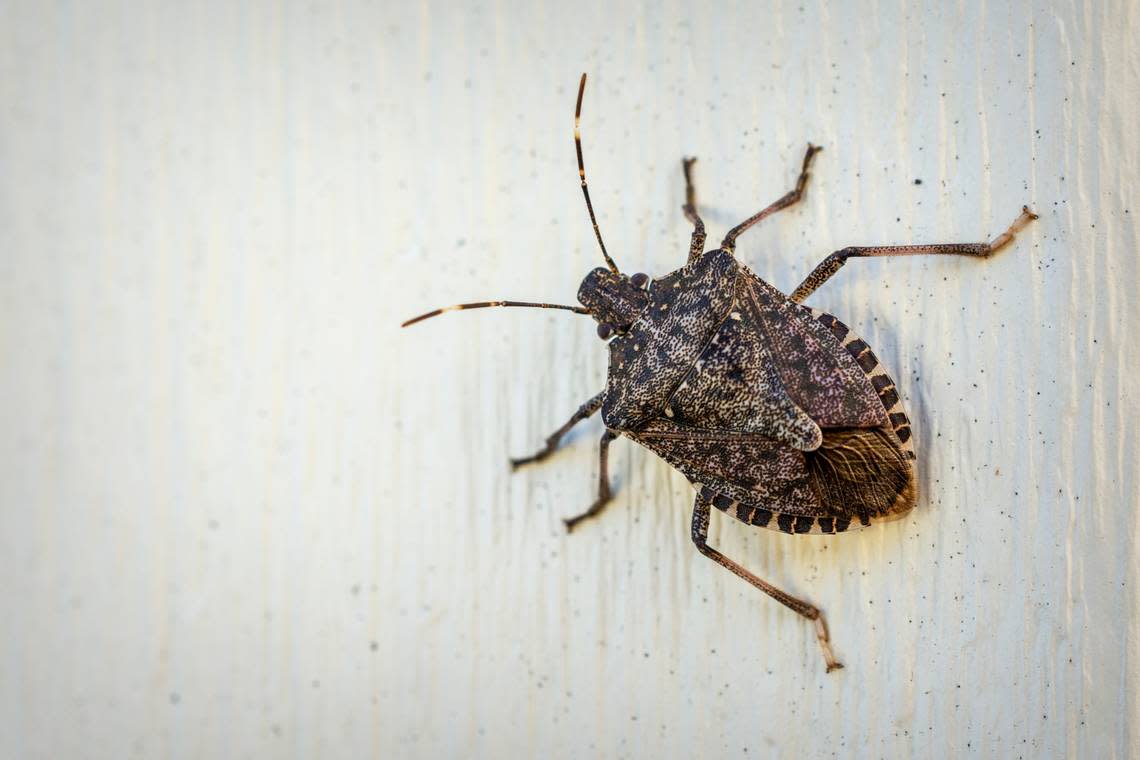Invasive stink bugs in WA, how to repel the smelly bugs and get them out of your home
You may be finding some oddly-shaped brown bugs in and around your home lately, who can also stink up your house.
These are brown marmorated stink bugs, and they have been extremely common in Washington this time of year.

An invasive season of stink bugs was predicted this year by researchers at Washington State University, who pointed to a study that concluded: “Changing weather could increase suitable habitat for the brown marmorated stink bug in the United States by 70%.”
The study was conducted by Pest Management Science, which took stink bug monitoring data and potential climate models to predict how climate change and changes in weather could impact the insects’ habitats.
More Washington residents have been spotting stink bugs in their homes as the weather cools down the insects desire warmer temperatures, according to WSU.
Washington has even released samurai wasps to try to control the invasive stink bugs and stop them from eating farmers’ crops across the state since 2018.
Stink bugs not only eat Washington’s crops, but are known for the stinky odor they emit as a defense mechanism, and when they are squished.
The bugs can spray their smell several inches, but their smell does more than just stink up the air, according to Cascade Pest Control. When the bug’s smelly fluid is released, it transfers to the carpet, person, or objects near them, including vacuum cleaners used to dispose of them.
So as these invasive and stinky bugs sneak into your home as the weather cools down, what can you do to get rid of them? Here’s what you should know.
What attracts stink bugs
Cascade Pest Control warns of a few things in your home that attract stink bugs:
▪ As stink bugs are known for eating crops, they are attracted to any fruits or vegetables in your garden, around your home or on your kitchen counter.
▪ Stink bugs are attracted to lights.
▪ Stink bugs are attracted to native Washington trees, weeds, shrubs and vines.
▪ Stink bugs are also attracted to other stink bugs through pheromones. If a stink bug gets into your home, it can release a pheromone that will attract other stink bugs to follow it.
How to prevent stink bugs
Cascade Pest Control advises you to prevent stink bugs from entering your home a few ways:
▪ Seal off any possible entry points into your home with silicone caulking.
▪ Repair torn window screens, weather stripping, door screens or door sweeps.
▪ Check what items you bring into your home that may have stink bugs on or inside them.
▪ Limit outdoor lights, such as porch lights, that attract stink bugs.
▪ Maintain your garden and property and keep shrubs and plants away from your home to avoid stink bugs.
How to get rid of stink bugs in your home
▪ You can hire a pest control company to handle stink bugs in your home.
▪ Cascade Pest Control warns you not to squish stink bugs, but to dispose of them by sweeping them into a bucket, and filling the bucket with four to five inches of soapy water.
▪ Washington State University’s Comprehensive Tree Fruit Site suggests using stink bug traps or pheromone traps to attract stink bugs and dispose of them without releasing their smell.
▪ Stink bugs can also be disposed of by grabbing them with a plastic bag and taking them outside to dispose of them according to Ortho, a pest control product company. Ortho also recommends flushing stink bugs down your toilet.
